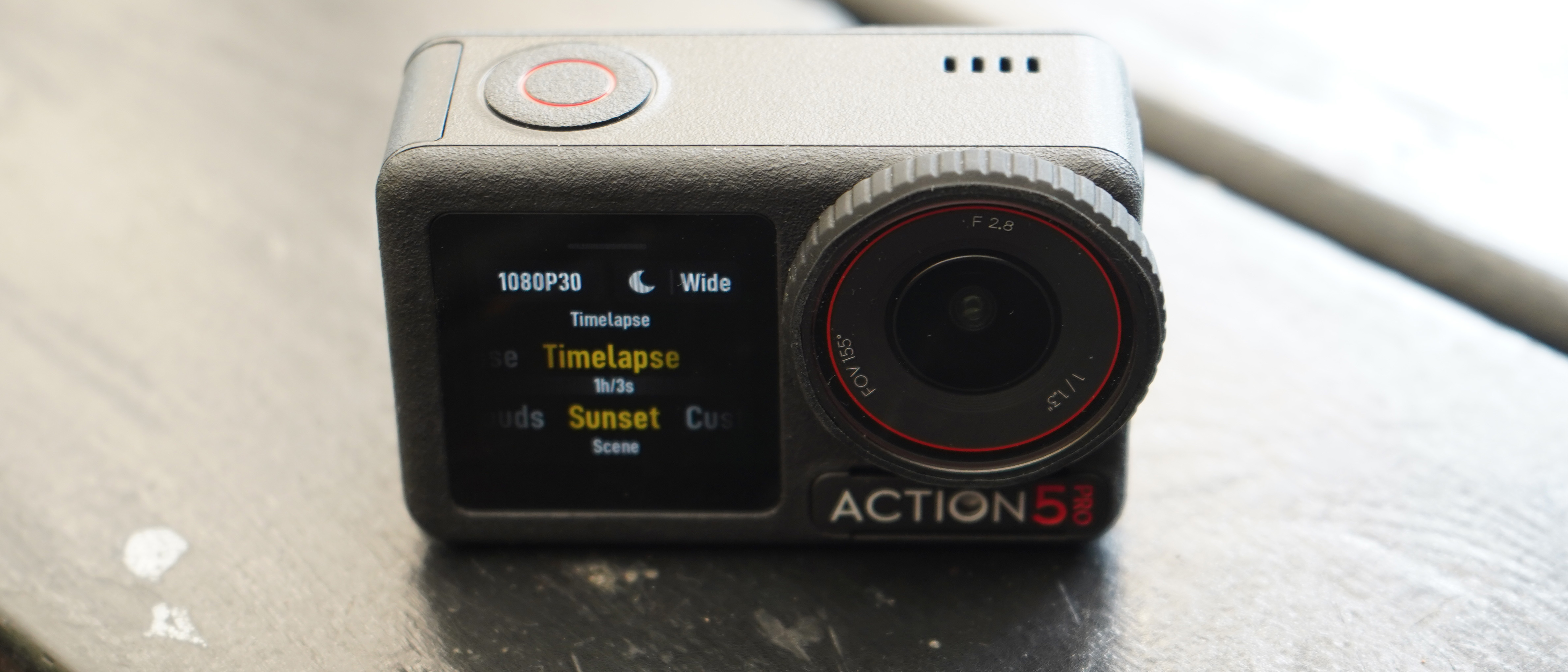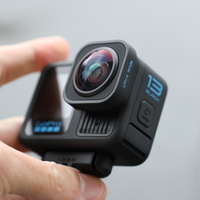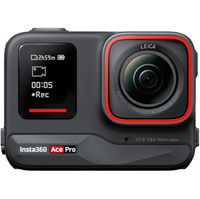Digital Camera World Verdict
The pure action camera, perfected – for the 4K era, anyway. No sensible reviewer could complain about what's been achieved in terms of quality and specification with attention to detail visible everywhere, and social creators will love the integrated image tracking feature. There are one or two places where it could stand to be little more joyful, however!
Pros
- +
Excellent low-light performance keep DJI ahead of GoPro
- +
Both bright, sharp screens are touchscreens
- +
Subject tracking is innovative
- +
960fps slo-mo promised (240fps tested)
- +
Near-instant startup time
Cons
- -
Still no resolutions above 4K
- -
Swappable lenses and filter sensing are not an option
- -
960fps "Super Slow Motion" uses AI-generated frames
Why you can trust Digital Camera World
In the last generation, DJI surpassed GoPro with what was to my mind – and many others – the best action camera. DJI not only won with a bigger image sensor (great in low light), but because their rival actually dropped a popular unique feature, GPS, enraging fans. The backlash was nothing short of humiliating for GoPro, the brand that created the product category.
Like the leading phone brands, however, there is a yearly product cycle and – while (like Apple and its new iPhones) you can't necessarily replace all the parts at once, both DJI and GoPro have had very good go at showing what they think is most important – or what they can achieve – in the action camera space with this new generation.
First things first, DJI has added the term 'Pro.' In this review, I'm going to try to find out what I think that means. It's not about a new image sensor size or 8K video because, well, neither of those things have arrived (nor did GoPro manage such change, so that is moot).
Much more interesting, though, is the arrival of subject tracking, which could be more of a boon to those creating for Instagram and TikTok than the GoPro's vaunted 8:7 sensor. Now I'm not sure "Pro" is the term for all creators, but then you don't have to be a professional phone user to but an iPhone 16 Pro Max and they all sold out for 4 weeks on day 1!
There are high-end features too, like the ability to get better "OsmoAudio" from DJI Mics popular with YouTubers – not mere Bluetooth audio, DJI tell me.
What, though, does this add up to?
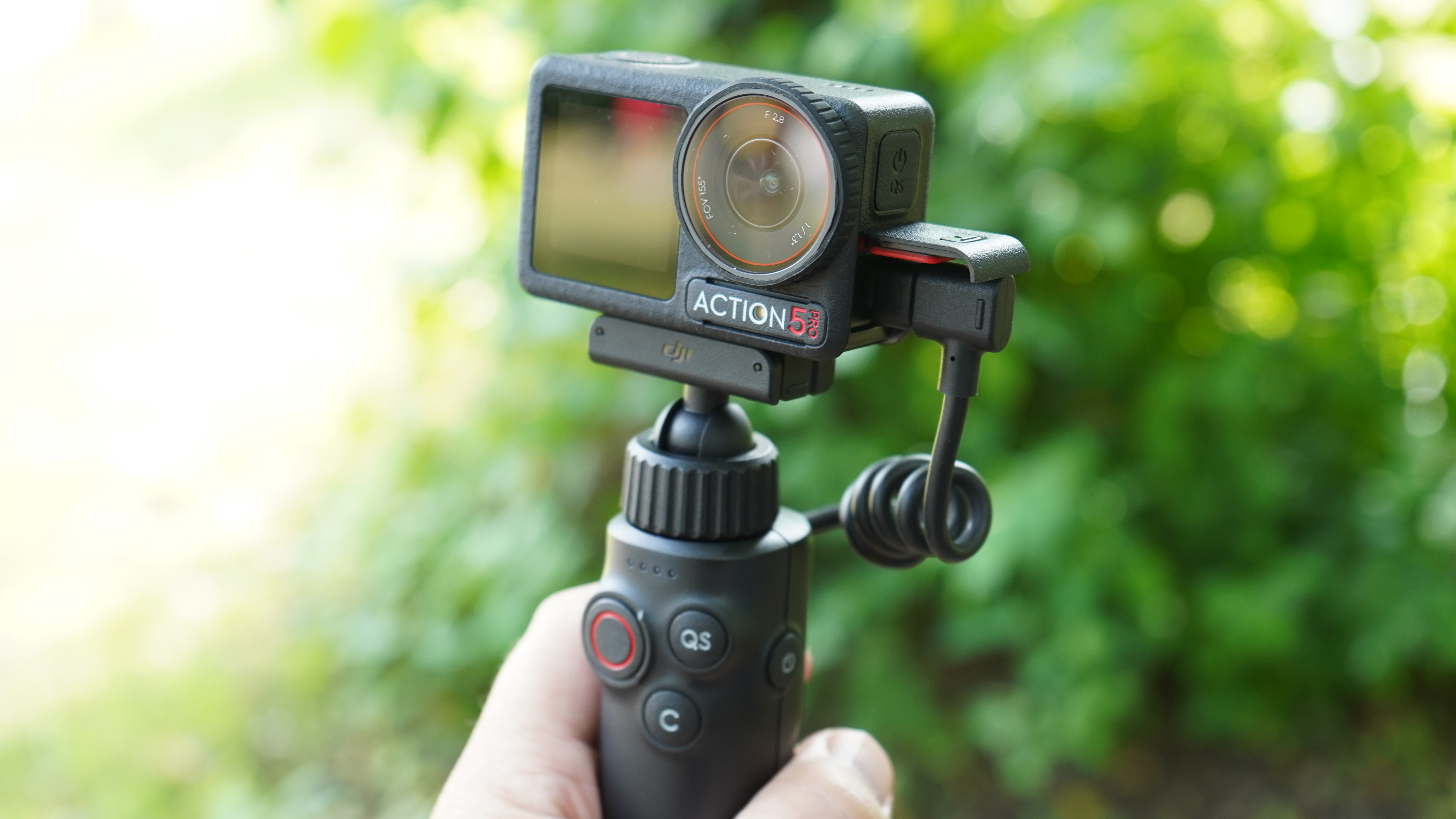
DJI Osmo Action 5 Pro: Specifications
| Image sensor: | 1/1.3-inch CMOS (same as Action 4) |
| Aperture: | ƒ/2.8 |
| Max video resolution: | 4K |
| Maximum frame rate: | 120fs at 4K, 240fps at 1080P |
| Best Slow-Mo | 1080P at 960fps |
| Photo resolution: | 3648 x 2736 px |
| Waterproof: | 20m / 65ft |
| Storage: | microSD (records at 130Mbps) |
| Displays: | Main 2.25-inch 360 x 640px, Front 320 x 320px |
| Microphones: | 3 |
| Weight: | 146g |
| Dimensions: | 71 x 44 x 33mm |
DJI Osmo Action 5 Pro: Price
The Osmo Action 5 Pro is priced at $349 / AU$599 in the cheapest bundle – camera only, one battery – which should have GoPro very worried.
This has also made the DJI Osmo Action 4 – with the same size sensor – extremely interesting in price since DJI's teaser campaign began. Perhaps the company will keep it on for a while.
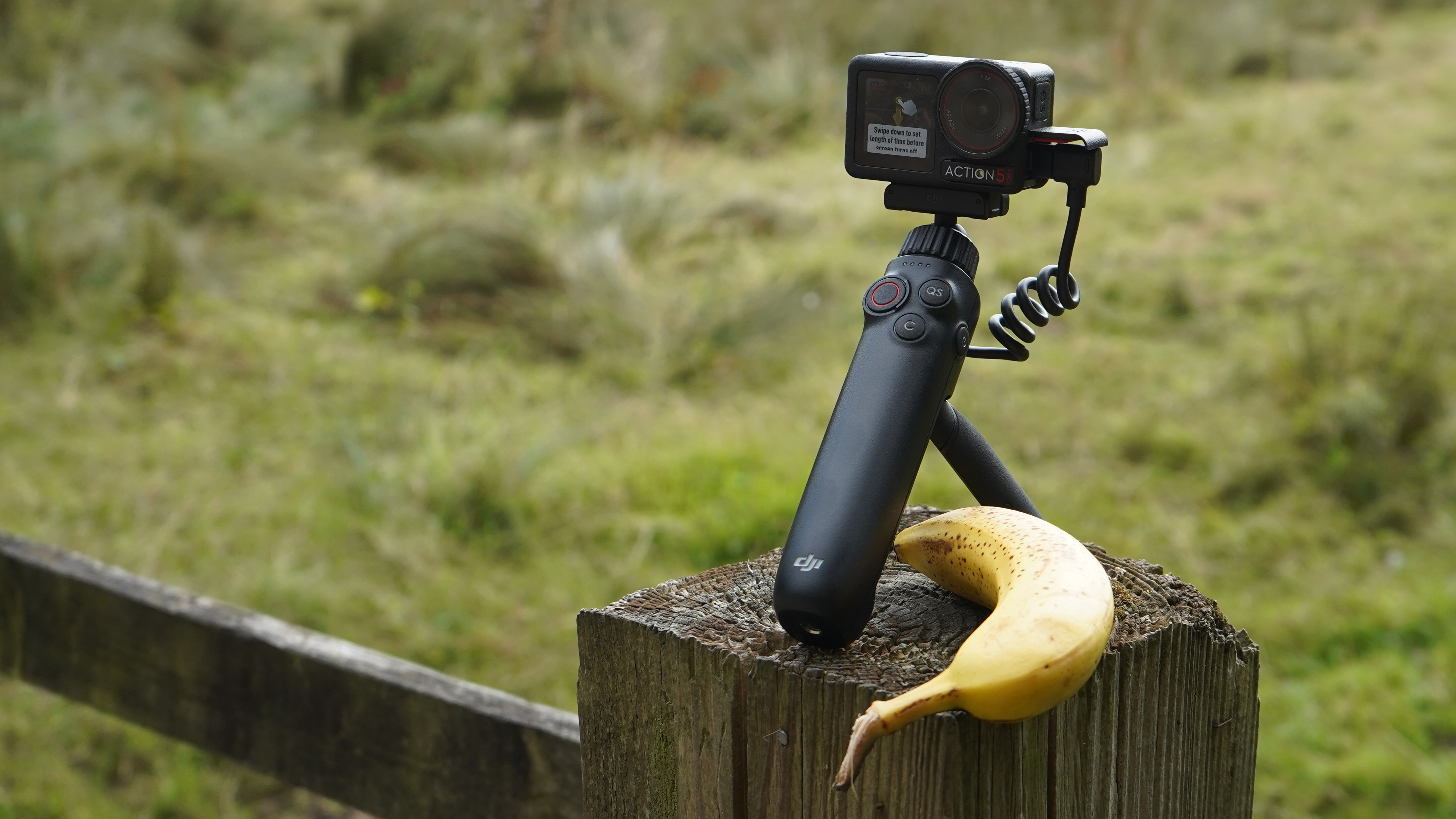
DJI Osmo Action 5 Pro: Design & Handling
The Action 5 Pro has a very straightforward design, almost deliberately boring. Those parts of the front and back which aren't actually touchscreens (and that's very little of the back, which is almost all screen).
The mode menu offers the usual (photo, video, slo-mo, timelapse etc.) and the new Super Nightmode – perhaps inspired by the Ace Pro's "Pure Video" feature. It, as the name suggests, helps the camera handle contrast at night.
The quality of the touchscreens is outstanding (326PPI is the sharpest in the business by about 30), and by default the brightness and detail is impressive (more so than its rival), and it's notable that the device doesn't lurch into power-saving mode at every opportunity either. Occasionally the slightly smaller front screen did seem a little slow to swipe up to unlock for me, negating its convenience benefit, but I tend to see this as a 'nice to have' anyway.
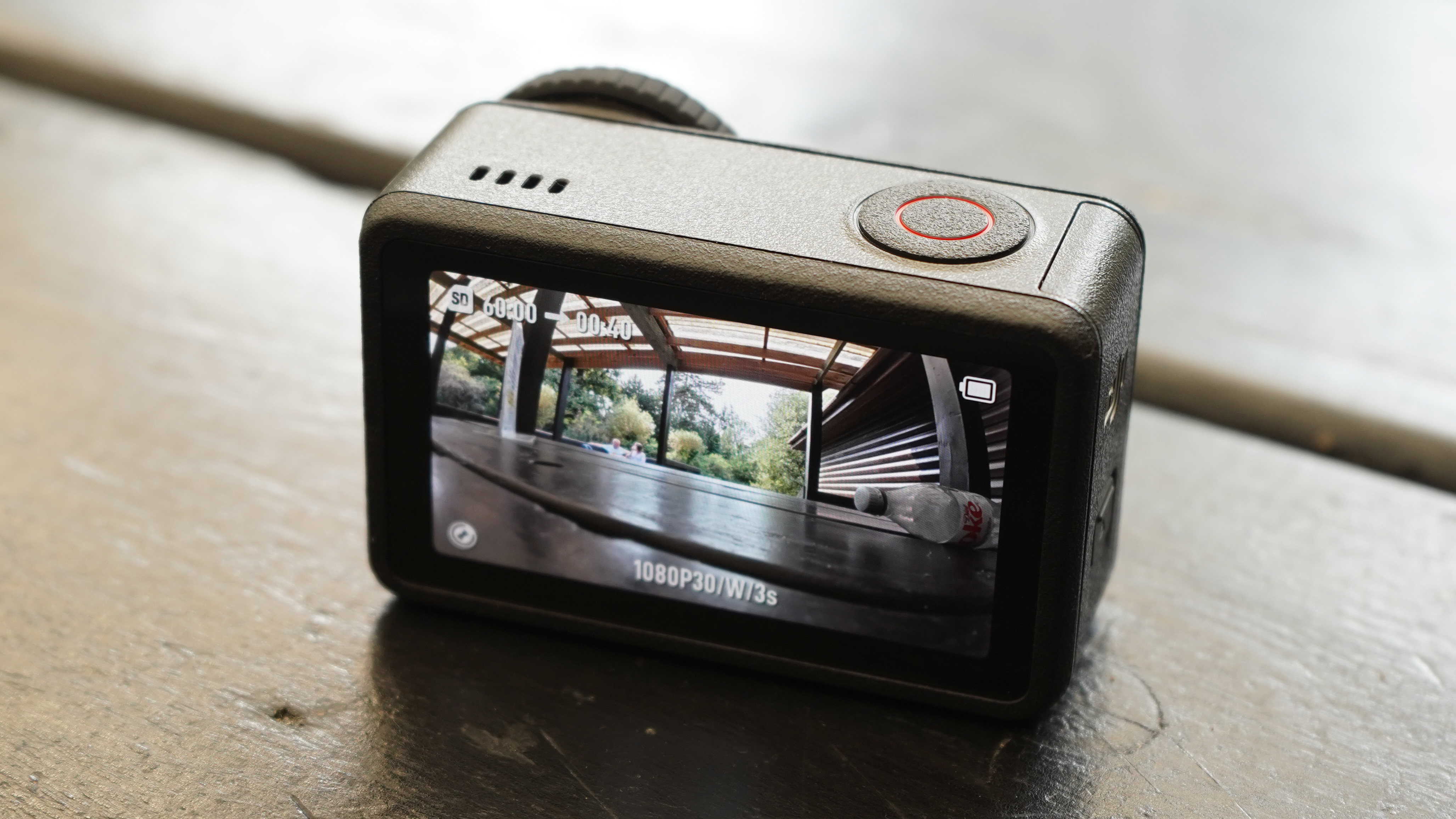
At either end of the device, you'll find reassuringly well-sealed doors – the quality of that seal is presumably why the camera is rated as 20m/65ft waterproof.
One end's door is for the battery and MicroSD slot. The other, smaller one for the USB-C socket (the camera can charge the battery itself, though DJI offer other options (depending on the bundle you opt for), including a handle and a charging hub. The hub's sprung-flap case is so much more elegant in design and traveller-friendly than GoPro's that it, too, is worthy of praise.
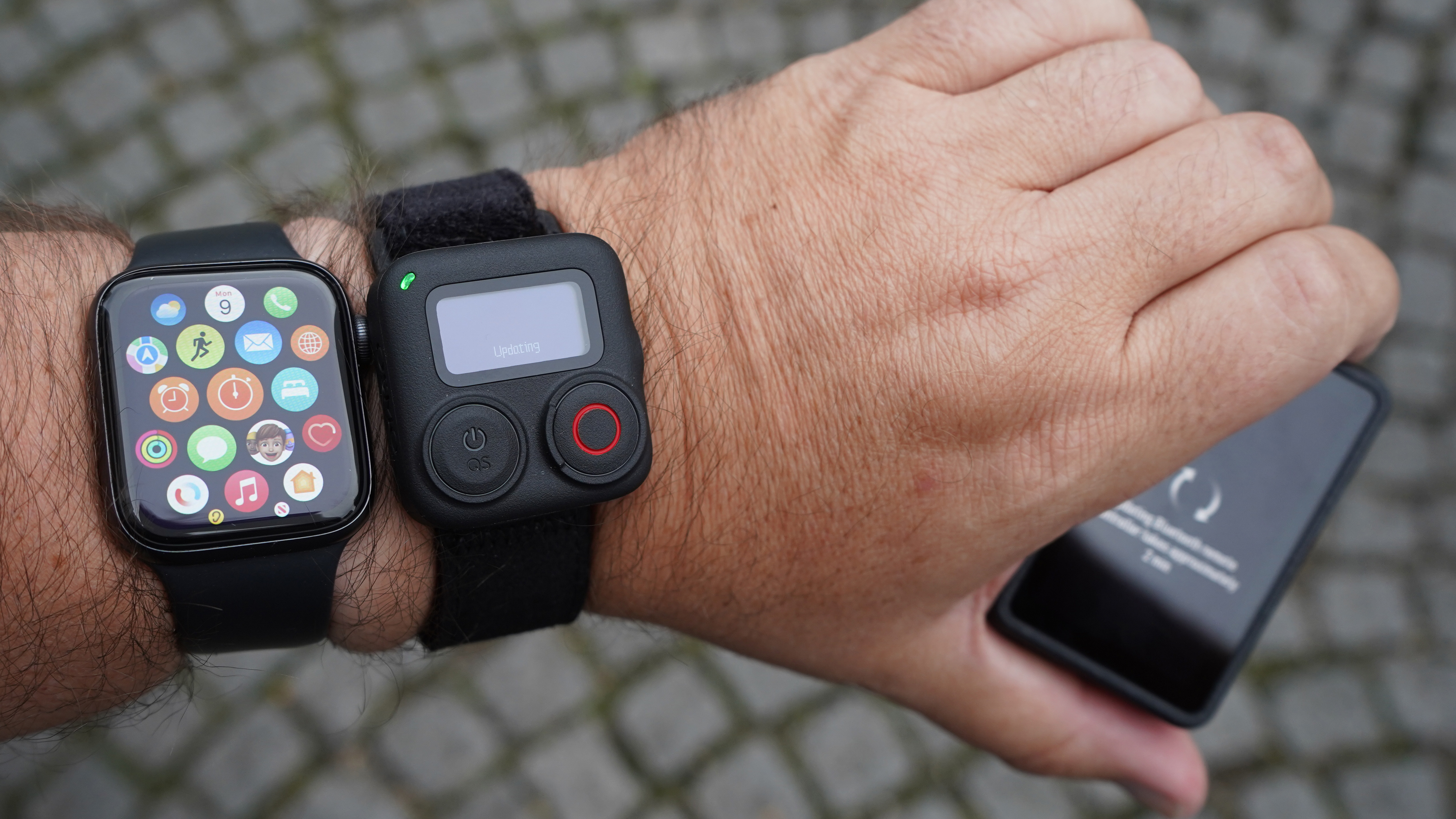
On the subject of accessories, DJI has not chosen to put GPS in the camera, but do offer (and included in my review loan bundle) a GPS Strap which is worn on the wrist. It looks are a long way short of the elegance of an Apple Watch – hinting more at the ruggedness of the Action 5 Pro (or, if I chose to be harsh, a stylish prisoner release tag). It does offer one advantage though – it is a remote control!
On the flip side, there is a pressure sensor in the housing, so the camera can record how deep it is, or – for paragliders – hidden in the 'O' – a barometric sensor that will feed back an altitude reading. You can also get telemetry from the Apple watch so I didn't need both on my arm in that photo!
The camera also boasts connectivity to the DJI Mic 2 not just via Bluetooth audio (which competitors can and do achieve), but the ability to control it using DJI's protocols and record a full 48KHz rate. Not, sadly for me, as I have the original DJI Mic.
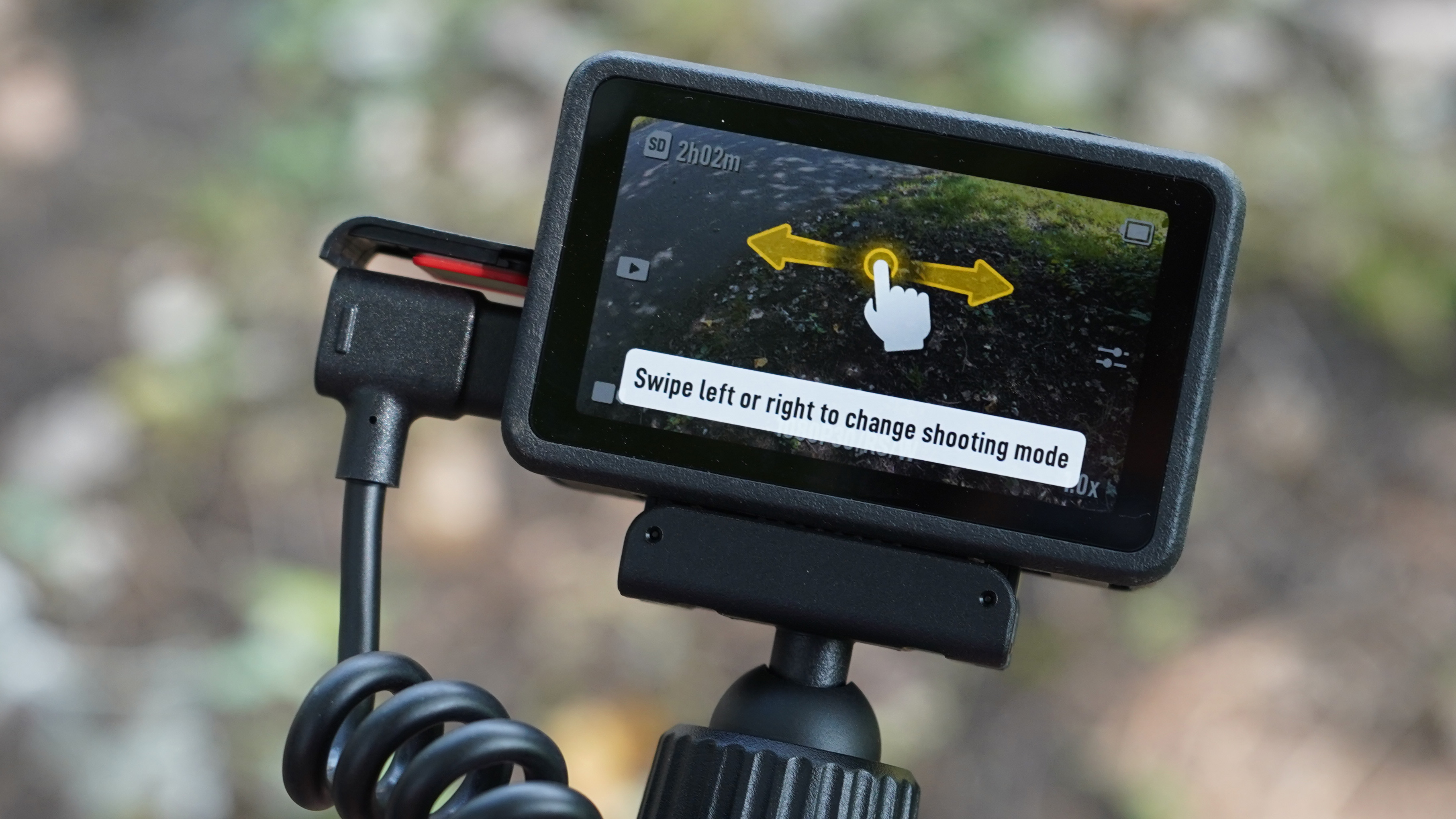
DJI Osmo Action 5 Pro: Performance
Most of my tests were in typical conditions, and the camera seemed to make sensible choices. The auto settings got the 'right look' for motion blur on the bike, though menus do allow for manual settings.
Image and video is excellent. In terms of personality it is generally less aggressively sharpened than its predecessor from DJI, and doesn't have the dishonest (but 'nice') warmth associated with GoPro.
I've said a lot in the past about low light, but it isn't just low-light where DJI's larger image sensor is beneficial; darker skin tones are also better represented on this camera than other action cameras. Super Night mode is impressive too, though I didn't need it to eclipse the GoPro Hero 13 Black in my simple side-by-side test.
Image stabilization doesn't need much discussion either as there is little to fault.

In normal daylight use (with the sun in tricky spots, admittedly), the lens did seem to catch a bit of glare more than I might have hoped; arguably it 'adds interest' but it'd have been nice to see a little less.
Battery-wise, DJI tell me you can, in lab conditions, manage 4 hours of recording at 1080P. That felt a bit optimistic, but it was still apparent the camera was ahead of the game, as does the quoted 210+ minutes recording 4K30 – but, even allowing for a dose of reality, it is still comfortably ahead of the pack here.
A very nice touch – GoPro changed their battery fittings when they improved the battery; DJI didn't, so you can also use your older batteries from Action 3 and 4 cameras if you have them (though they won't last as long).
I wasn't able to make the camera overheat and cut out testing in the UK – that said it didn't get over 30˚C (86F) in my testing period, but according to DJI I'd have been OK in weather up to 45˚C (113F).
I appreciate that DJI has included support for WiFi 6 file downloads – good stuff given the presence of a generous amount of on-board storage space – but I must admit I'm a bit old fashioned and stick to memory cards which I (tell myself I) can manage!
DJI Osmo Action 5 Pro: Sample Images
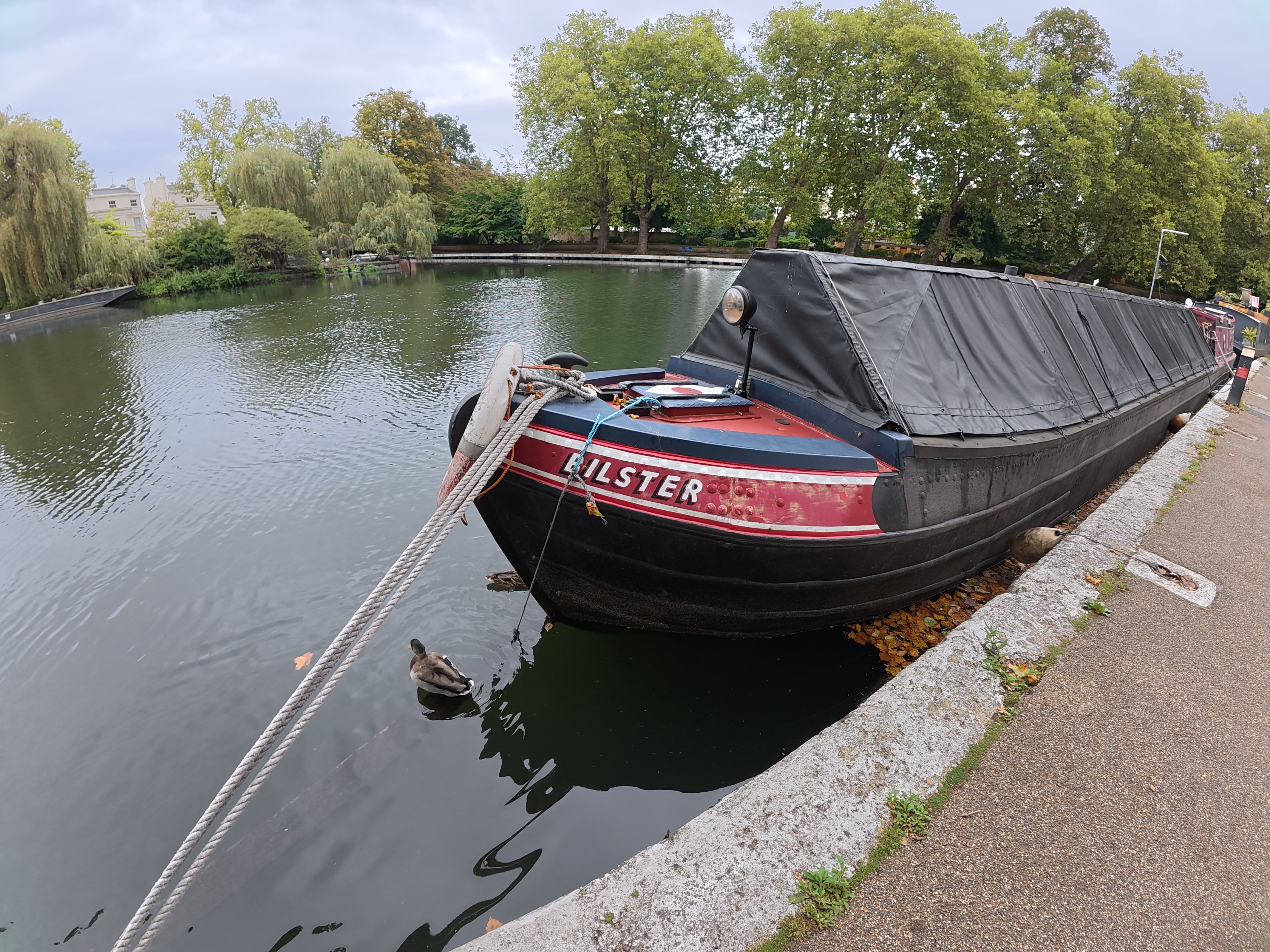
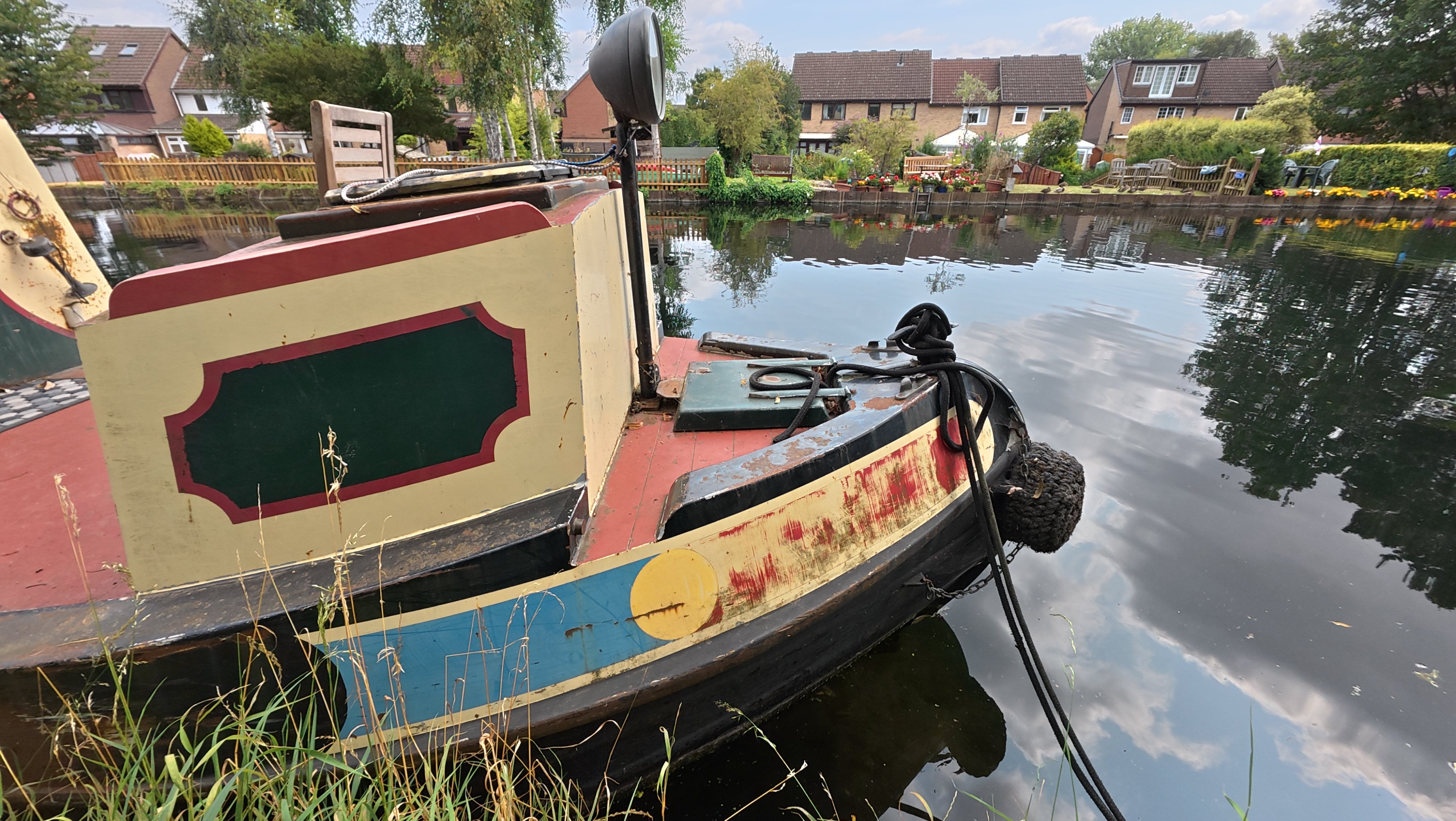
DJI Osmo Action 5 Pro: Sample Video
In my video test, the most telling part of the whole experience was a low-light moment when I simply stood under a bridge on a gloomy day and held both the Action 5 Pro and the GoPro Hero 13 Pro in the same hand and talked into them, both on the same settings.
Sure, both pick-up background noise, but the Action 5 Pro produced a capable shot that you could stuff into a YouTube – certainly a social video – showing detail across the image (a shame since my beard clearly needed maintenance), whereas the GoPro was noisy and dark, and struggled to identify detail.
I was also impressed that Mimo was able to overlay GPS data from the GPS Remote accessory on my phone – though a clip of a few minutes took a few more to render at 4K so it's not something you'd want to do for many long clips! It's nice, though, that this app is provided for free, without the hint of a subscription request (but I'd like it if, like Insta360, a FCP plugin was available too).
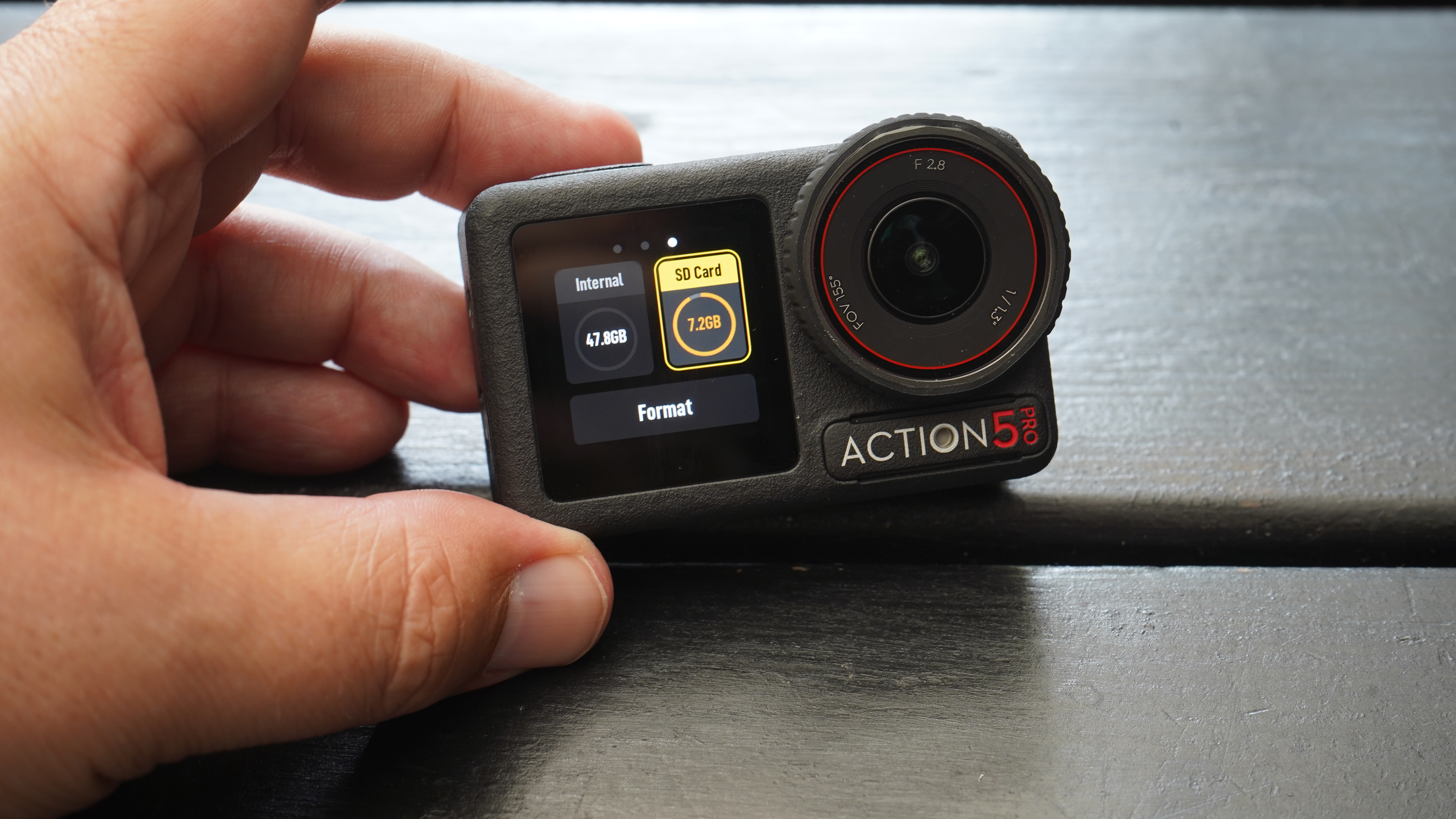
DJI Osmo Action 5 Pro: Verdict
The problem with this camera is that, on its own terms, it is close to faultless. The wider issue is that, I don't know that everyone looking for an action camera would choose DJI's terms.
Let me explain. Personally I tend to be impressed by the refinement of technology, and that has happened here extensively. DJI point to a new image sensor, albeit of the same size, and the image quality is spectacular, with low light detail (as on the Action 4) class-leading. The snappy processor and refined (free) app are also big plusses.
I also like the purity of the design, and am prepared – grudgingly – to accept that keeping GPS out of the main housing makes some sense, especially in exchange for the pressure sensor, it helps keep the camera small & battery good, and who doesn't have a watch or Garmin that can provide GPS tracking?
It is harder, though, to look at the flexibility and practicality of GoPro's lens & filter system and not think "But I want that, that'd be cool!" (even if, realistically, you might never use it and it might turn out to be a bit of cash drain).
DJI, then, has done it again, brilliantly, and the sensible buyer will likely see that. It is, just, I have to admit, a little hard to see the sense as GoPro strut.
| Features | As far as useful functionality on a camera built to survive tough times, you've got frame rates up to a stunning 960fps, 10-bit HLG, timecodes, Mic 2 integration, and subject tracking – amazing; lacking only GPS and | ★★★★☆ |
| Design | Simple but effective, the design also builds in clever robustness and waterproofing. It would have been nice to see lens adapters though! | ★★★★☆ |
| Performance | Video quality is absolutely stunning, and the camera manages to handle rapid shifts in conditions with such subtle elegance you hardly notice. Every road detail seems apparent, and image stabilization works as expected. | ★★★★★ |
| Value | This isn't a cheap action camera, but it earns a high value score because it does bring high end features at a lower price than others, while also boasting the best image sensor in the business. | ★★★★★ |
✅ Buy it...
- You want the best quality action camera in business in terms of video, especially in lower light
- You're looking for editor-friendly features like timecodes, easy drone color matching, and 10-bit HLG
- You have a secondary need to capture vertical video while the camera stays still
🚫 Don't buy it...
- You want to record your GPS speed data in-camera (DJI use a watch-like remote, or let you use your watch/Garmin)
- You want swappable "Lenses"
Alternatives
The GoPro Hero 13 Black is the obvious contender. It is more expensive than the DJI offering, and has an inferior image sensor, but the case incorporates a lens attachement system which automatically recognises ND filters and lens modifiers which is an exciting balance of pro and fun. There is also GPS in the case and (while it's no match for DJI's) the battery has been improved over the Hero 12 Black.
The Insta360 Ace Pro is a serious alternative for those driven by quality. It's slightly bulkier than DJI or GoPro's offerings, but the rear touchscreen is articulated to flip up like a vlogging camera. Oh, and it can capture 8K video from a sensor as big as the DJI, so it can also embarrass GoPro in low light. As the Osmo Action 5 Pro launches, this is a year old and interestingly priced, too!

With over 20 years of expertise as a tech journalist, Adam brings a wealth of knowledge across a vast number of product categories, including timelapse cameras, home security cameras, NVR cameras, photography books, webcams, 3D printers and 3D scanners, borescopes, radar detectors… and, above all, drones.
Adam is our resident expert on all aspects of camera drones and drone photography, from buying guides on the best choices for aerial photographers of all ability levels to the latest rules and regulations on piloting drones.
He is the author of a number of books including The Complete Guide to Drones, The Smart Smart Home Handbook, 101 Tips for DSLR Video and The Drone Pilot's Handbook.
